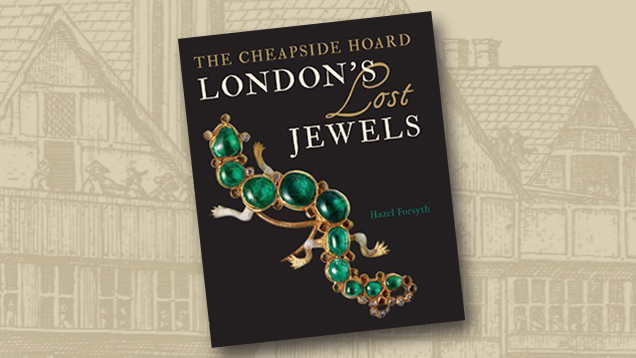Books: The Cheapside Hoard: London's Lost Jewels
January 23, 2015

The book begins with the 1912 discovery of the hoard during the renovation of a building in the Cheapside area of London. The story itself is like a detective novel, involving shady characters and intrigue. Forsyth has done exhaustive research to bring it to light. The book is illustrated with period documents, drawings, and paintings. The thorough research into both the 1912 discovery and London’s 16th- and 17th-century jewelry trade will delight historians. The beautiful photos of the pieces highlight both the wonderful gems in the hoard and the unique settings created by Elizabethan and Jacobean jewelers. This book is a great resource not only for jewelry historians but also for anyone who has an interest in gems from this period.
The Cheapside Hoard, a treasury of nearly 500 pieces, is the most important collection of jewelry from this era. Forsyth takes the reader on a journey to the days when these jewels were created, exploring the gem trade in London and around the world. Exotic locations from which the gems originated, such as Persia, India, and Colombia, are interwoven in stories of the secretive and sometime dangerous gem trade. Also discussed are the guilds and the leading characters in the industry at the time. The reader is introduced to politics and disputes that took place within the trade through the court and guild documents cited by the author. The craftsmen’s workshops and tools are also described in detail.
Not only are the jewels beautifully illustrated, but the period paintings throughout the book show how they were worn. It is said a picture is worth a thousand words. To learn that a bodkin is a hair ornament is informative, but to see it worn in a 1617 portrait of Anne of Denmark illustrates the point even better. Earrings, rings, necklaces, cameos, and more are seen in period portraits throughout the book. The photos of the gems and jewels show the exquisite craftsmanship of the pieces in this collection. The enamel work, gold work, and imaginative settings of these pieces capture the reader's imagination. They are of the highest quality from this period.
The most impressive piece in the Cheapside Hoard is the watch encased in a large hexagonal-cut Colombian emerald. The dial, with gold roman numerals, is made of green enamel to match the emerald’s color. The lid of the watch case is also solid emerald and is translucent enough to see the face and tell the time even when it is closed. It is truly a masterpiece of watchmaking and stone-cutting design.
The Cheapside Hoard: London's Lost Jewels is recommended to anyone who enjoys historical jewelry, the history of European trade, or beautiful gems. It is a chance to see precious artifacts with mysterious and intriguing stories, artifacts that give a glimpse into a bygone era.
About the Reviewer
Timothy Adams is an independent art historian specializing in the work of Carl Fabergé, jeweler to the Russian Imperial Court. He is the curatorial consultant for the decorative arts at the Bowers Museum in Orange County.
.jpg)


